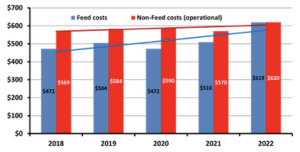Sandy Johnson, extension beef specialist, Colby
It is hard to prepare for extreme winter weather when December in Kansas may be one of the warmest on record. However, variability seems to be a characteristic of our weather lately and a drop in temperature with or without above normal precipitation could create some very stressful conditions for livestock. Animals adapt to colder weather as we go through the fall into winter, but if there is an abrupt change, without acclimation, the stress is compounded. Planning ahead can lessen some of the challenges. Continue reading “Preparing for Winter Weather Extremes”


